Overview
Using the Integration capabilities on Hire2Retire you can create various entries including Request, Change, Problem, Task and Solution entities on ServiceDesk for various employee lifecycle changes.

Configuring Entries to be created on ServiceDesk¶
Create Entries¶
You can create one or more entries of any type on each employee lifecycle event. The summary table will show you all the entries configured to be created along with the lifecycle operation.
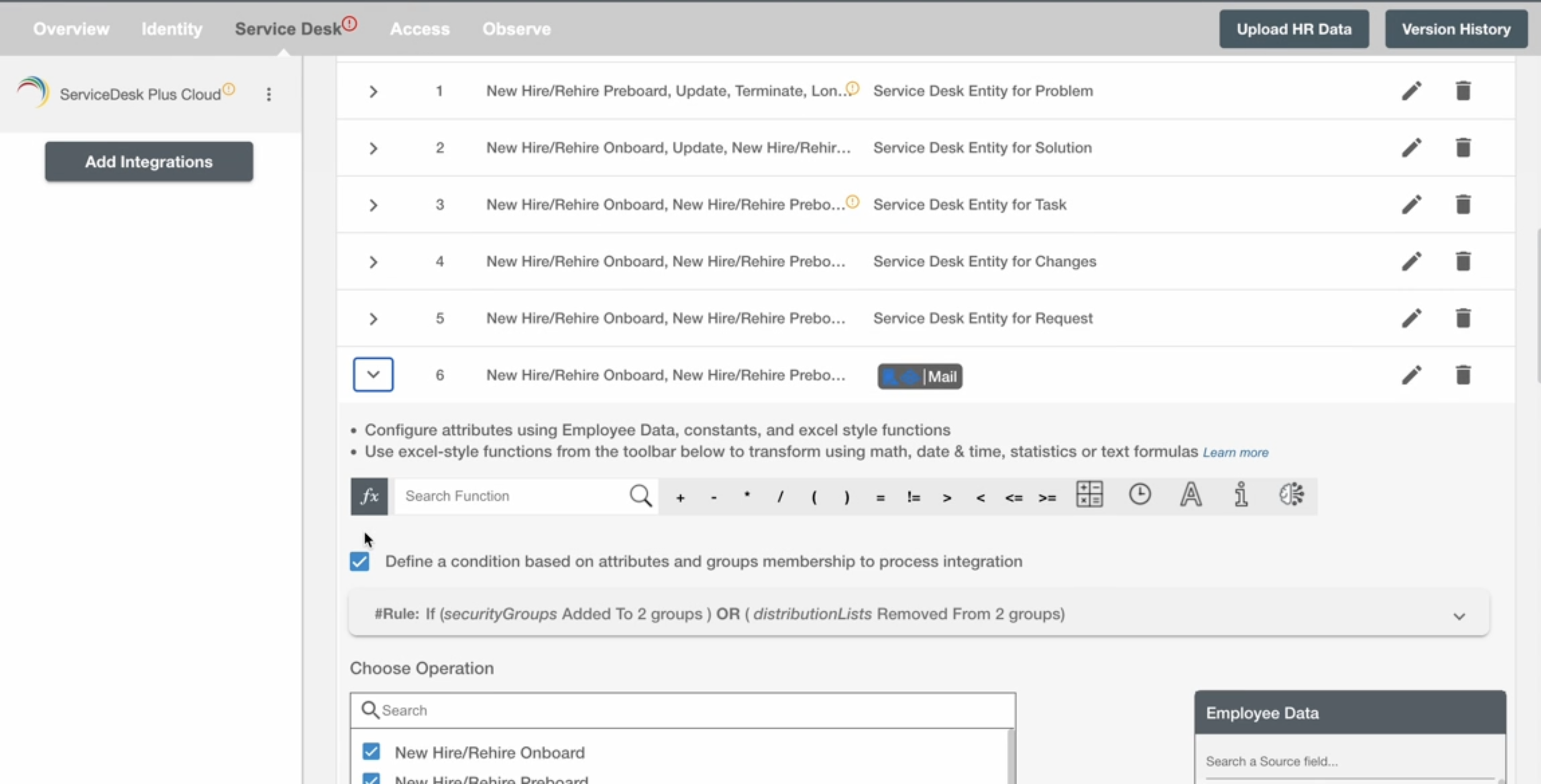
Choose Operation(s)¶
You can create entries on ServiceDesk for the following Employee Lifecycle operations:
- New Hire/Rehire Onboard
- New Hire/Rehire Preboard
- Update
- Termination
- Schedule Termination
- Termination: Account Deletion
- All type of Leaves ( Long Term, FMLA, Security Discipline, Legal )
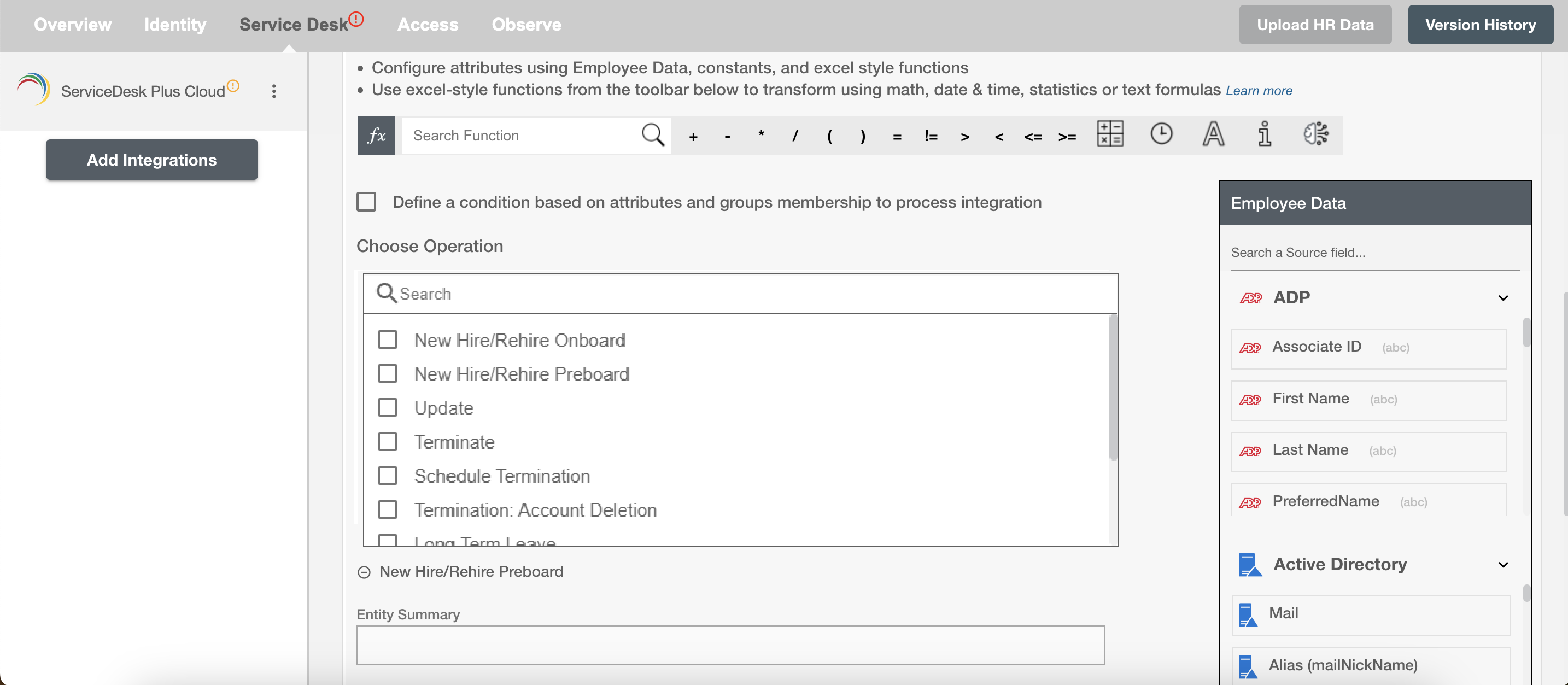
Entity Attributes¶
Entity Summary¶
Entity Summary serves as the primary headline or title of the Entity, providing a snapshot of its content or issue. You can provide a summary for each entity you are configuring, the summary will be visible along with the entity type and operations on the summary table. The Entity Summary is not populated on ServiceDesk.
Select Entity¶
You can select the Entity to create among the following:-
- Request
- Change
- Problem
- Task
- Solution
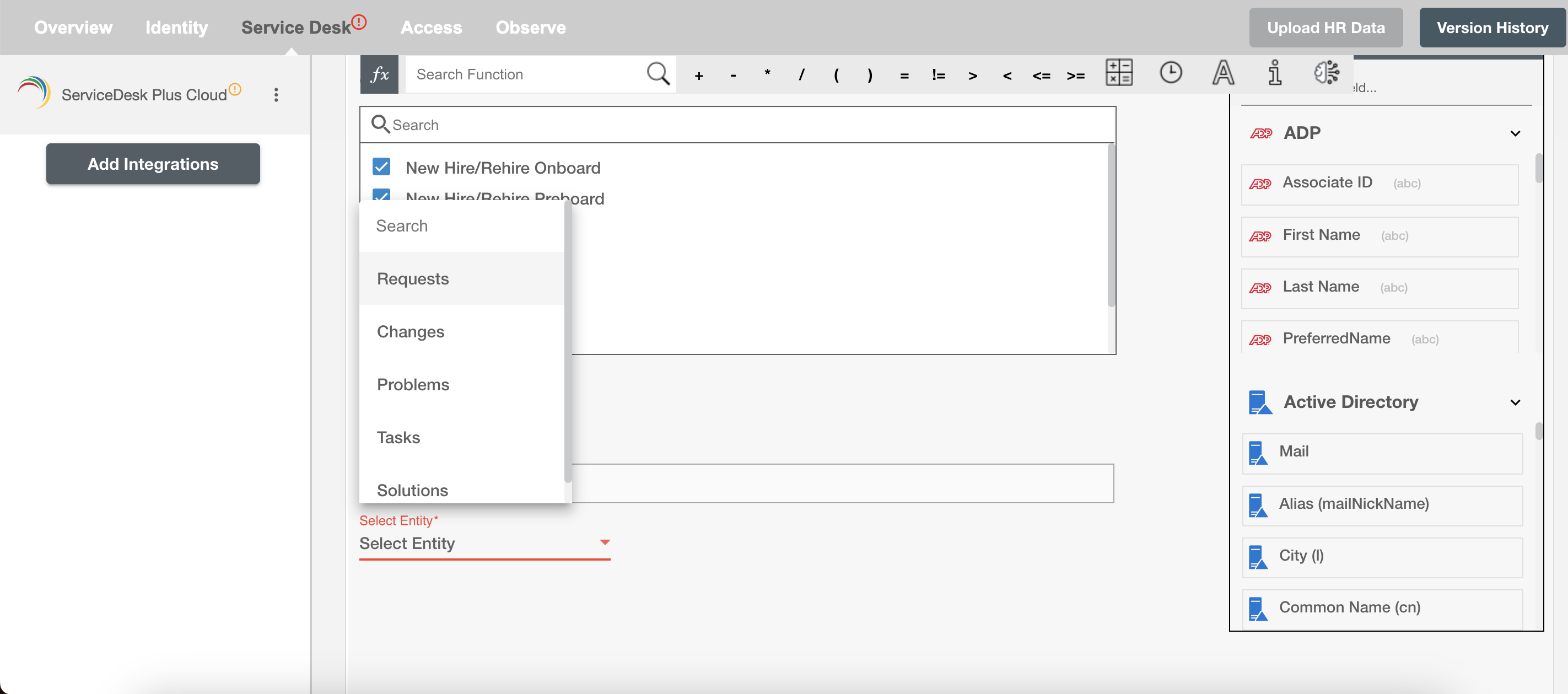
Mandatory Attributes For Each Entity¶
ServiceDesk requires a following mandatory attributes for every newly created entity:-
Request¶
| Attribute | Description |
|---|---|
| Requester | Requester Name : If the name you provide exists on ServiceDesk, everything will go smoothly. However, if it doesn't exist, A new requester will be created using the same name. Requester Email : If the name you provide exists on ServiceDesk, everything will go smoothly. However, if it doesn't exist, an error will occur and the entity will not be processed. |
| Subject | Subject of this request. |
| Site | Denotes the site to which this request belongs. Default value is Base Site. |
| Status | Indicates the current status of this request. Default value is Open. |
Change¶
| Attribute | Description |
|---|---|
| Change Requester | Requester Name : If the name you provide exists on ServiceDesk, everything will go smoothly. However, if it doesn't exist, an error will occur and the entity will not be processed. Requester Email : If the name you provide exists on ServiceDesk, everything will go smoothly. However, if it doesn't exist, an error will occur and the entity will not be processed. |
| Title | Title of the change request. |
| Stage | Indicates the current stage of the change. Default value is Submission. |
| Status | Indicates the current status of the change. Default value is Requested. |
| Site | Indicates the site of the change request. Default value is Base Site. |
| Retrospective | Indicates whether the change is retrospective. Default value is No. |
Problem¶
| Attribute | Description |
|---|---|
| Reported By | Reporter Name : If the name you provide exists on ServiceDesk, everything will go smoothly. However, if it doesn't exist, an error will occur and the entity will not be processed. Reporter Email : If the name you provide exists on ServiceDesk, everything will go smoothly. However, if it doesn't exist, an error will occur and the entity will not be processed. |
| Title | Title of the problem. |
| Site | Indicates the site of the problem. Default value is Base Site. |
| Status | Indicates the current status of the problem. Default value is Open. |
Task¶
| Attribute | Description |
|---|---|
| Owner | Owner Name : If the name you provide exists on ServiceDesk, everything will go smoothly. However, if it doesn't exist, an error will occur and the entity will not be processed. Owner Email : If the email you provide exists on ServiceDesk, everything will go smoothly. However, if it doesn't exist, an error will occur and the entity will not be processed. |
| Title | Title of the task. |
| Status | Indicates the level of progress of the task. Default value is Open. |
| Notify me before schedule start | Indicates when to send an notification before schedule start. Default value is Never. |
Solution¶
| Attribute | Description |
|---|---|
| Title | Title of the task. |
| Content | Content of the solution. |
| Topic Name | Indicates the topic of the solution. |
Select attributes¶
You can select the attributes of the entity(s) that you want to populate. You can map values from the AD to populate these attributes. You can also use Hire2Retire's powerful data transformation capabilities using Excel Style functions.
Example¶
Given below is an example to create entity(s) on ServiceDesk using Hire2Retire. In this example, whenever a new employee is onboarded, a Request is created on ServiceDesk to provision them with the necessary hardware and software licenses essential to perform their job, hence the New Hire/Rehire Onboard and New Hire/Rehire Preboard operation is selected.
You can provide the entity summary and select the available attributes.
You can also add any additional attributes apart from the default attributes using '+' sign. Refer to the example workflow images available below.


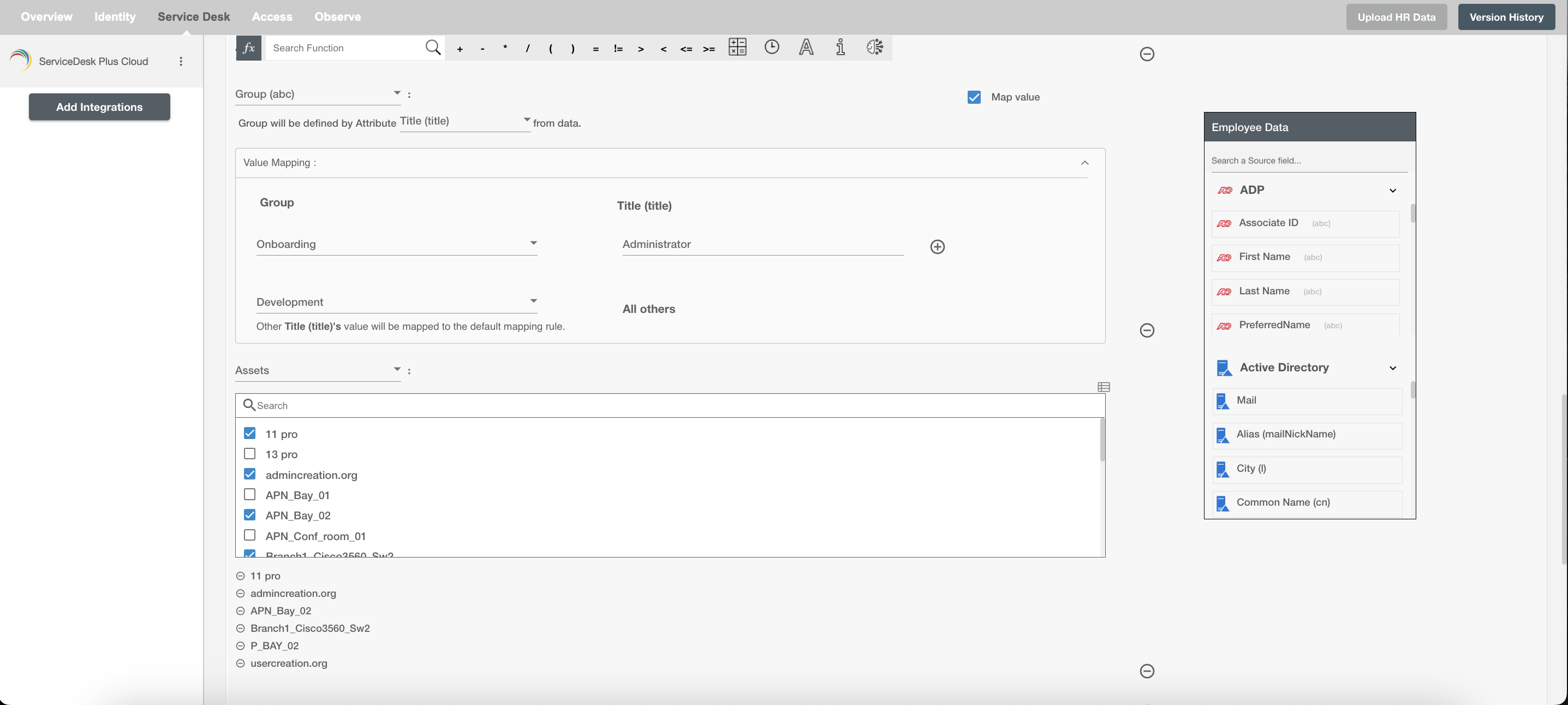
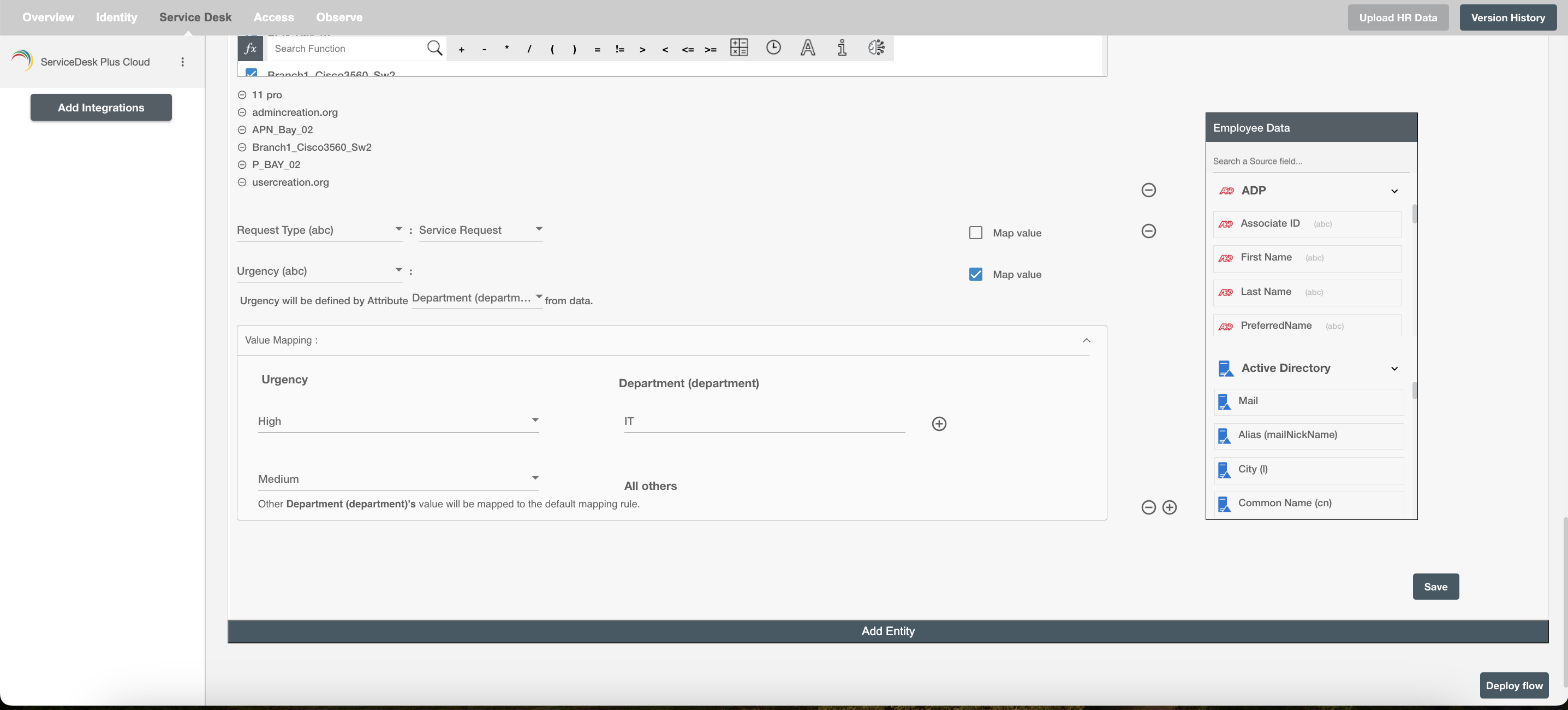
Figure 5. Configuring the Request Entity on Hire2Retire